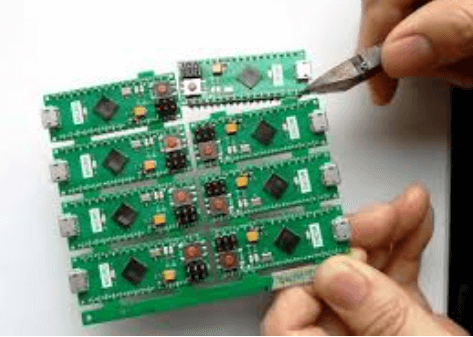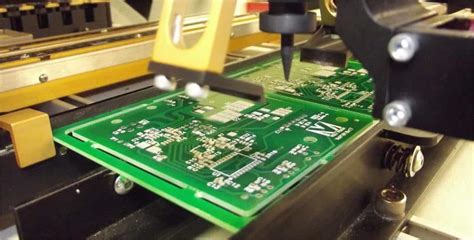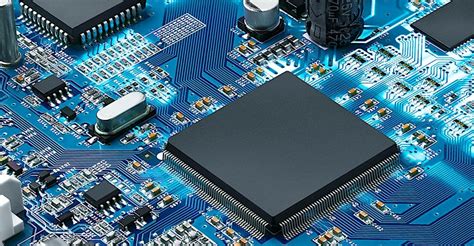How to Create Rails on PCB Pads: A Comprehensive Guide
Introduction to PCB Rails
Printed Circuit Board (PCB) rails, also known as guard rails or edge rails, are essential conductive pathways that serve multiple purposes in electronic design. These rails typically run along the edges of a PCB or between critical components, providing structural support, electromagnetic shielding, and reliable power distribution. When properly implemented on pads, rails can significantly enhance the performance and reliability of your PCB design.
This comprehensive guide will walk you through the entire process of creating rails on PCB pads, covering design considerations, material selection, implementation techniques, and best practices for optimal results.
Understanding PCB Pad Rails
What Are PCB Pad Rails?
PCB pad rails are extended conductive surfaces that connect to component pads, serving as robust connection points or protective barriers. Unlike standard traces, rails are typically wider, thicker, and often serve multiple functions simultaneously:
- Mechanical reinforcement for solder joints
- Improved current-carrying capacity
- Enhanced heat dissipation
- EMI/RFI shielding
- Structural support for connectors or edge components
Types of Rails on PCB Pads
- Power Rails: Designed to carry higher currents with minimal voltage drop
- Ground Rails: Provide low-impedance return paths and shielding
- Signal Guard Rails: Protect sensitive signals from interference
- Edge Connector Rails: Facilitate reliable board-to-board connections
- Thermal Rails: Help dissipate heat from power components

Design Considerations for PCB Pad Rails
Electrical Requirements
When designing rails on PCB pads, several electrical factors must be considered:
- Current Carrying Capacity: Calculate the required width based on expected current (use IPC-2152 standards)
- Voltage Drop: Ensure minimal voltage loss along the rail length
- Impedance Control: Critical for high-speed designs (may require specific width-to-height ratios)
- Clearance and Creepage: Maintain proper spacing for voltage isolation
Thermal Management
Rails can significantly impact thermal performance:
- Heat Dissipation: Wider rails help spread heat from components
- Thermal Relief: Consider when connecting to large copper pours
- CTE Matching: Account for thermal expansion differences between materials
Mechanical Factors
- Physical Strength: Rails can reinforce solder joints against mechanical stress
- Vibration Resistance: Proper rail design can improve durability
- Assembly Considerations: Ensure rails don’t interfere with component placement or soldering
Step-by-Step Process for Creating Rails on PCB Pads
Step 1: Schematic Design
- Identify which pads require rail connections
- Create appropriate schematic symbols if needed
- Define net connections (power, ground, signals)
- Add necessary designators and labels
Step 2: PCB Layout Preparation
- Determine rail width based on current requirements
- Plan routing paths considering signal integrity
- Identify layer stackup and assign rails to appropriate layers
- Set design rules for rail spacing and clearances
Step 3: Creating the Rail Structure
In Your PCB Design Software (e.g., Altium, KiCad, Eagle):
- Select the pad where the rail will originate
- Choose the appropriate tool (usually “Route” or “Track” tool)
- Set the desired width for your rail (typically 20-100 mils)
- Draw the rail path from the pad to its destination
- Ensure proper connection to the pad (full connection or thermal relief)
Step 4: Optimizing Rail Geometry
- Use curved corners instead of 90° angles to reduce current crowding
- Implement teardrops at pad-to-rail junctions for mechanical strength
- Consider adding copper pours adjacent to rails when appropriate
- Verify adequate spacing between parallel rails
Step 5: Design Rule Checking (DRC)
- Run electrical rule checks for shorts, opens, and spacing violations
- Verify manufacturing constraints (minimum width, spacing)
- Check thermal considerations
- Confirm impedance requirements (for high-speed designs)
Step 6: Generating Manufacturing Files
- Produce Gerber files with all layers containing rails
- Generate drill files with proper annotations
- Create assembly drawings highlighting rail features
- Include any special instructions for rail treatment (plating, etc.)

Advanced Techniques for PCB Pad Rails
Multilayer Rail Implementation
For complex designs, rails may span multiple layers:
- Use stacked vias for current sharing between layers
- Implement via stitching along rail paths for improved performance
- Consider microvia technology for high-density interconnects
Impedance-Controlled Rails
For high-speed applications:
- Calculate required trace geometry for target impedance
- Maintain consistent dielectric spacing
- Use ground planes as reference for controlled impedance
- Avoid discontinuities that could cause reflections
Embedded Rails
Advanced PCB technologies allow for:
- Buried rails within the PCB substrate
- Rail integration with copper coin heat sinks
- 3D-formed rails for specialized applications
Material Selection for PCB Rails
Standard Materials
- Electrolytic Copper: Most common (typically 1oz/ft² to 4oz/ft²)
- Heavy Copper: For high-current applications (up to 20oz/ft²)
- Silver Plating: For high-frequency or low-resistance needs
Specialized Options
- Embedded Bus Bars: For extreme current requirements
- Thermal Interface Materials: For heat dissipation rails
- Flexible Circuit Materials: For dynamic applications
Manufacturing Considerations
Fabrication Processes
- Etching Considerations: Account for copper thickness in rail width
- Plating Options: Electroless nickel immersion gold (ENIG), HASL, etc.
- Solder Mask Application: Define where rails should be exposed or covered
Quality Control
- Automated Optical Inspection (AOI): Verify rail geometry and connections
- Electrical Testing: Continuity and isolation checks
- Cross-Section Analysis: For critical rail implementations
Common Challenges and Solutions
Challenge 1: Solder Bridging on Dense Rails
Solution:
- Implement solder mask dams between closely spaced rails
- Use NSMD (non-solder mask defined) pad design
- Specify appropriate solder paste stencil apertures
Challenge 2: Thermal Stress Cracking
Solution:
- Use curved rail transitions instead of sharp corners
- Implement strain relief features
- Consider flexible solder mask materials
Challenge 3: EMI from Power Rails
Solution:
- Implement proper decoupling near rail connections
- Use shielded rail structures when necessary
- Consider split rail designs with filtering
Best Practices for PCB Pad Rails
- Maintain Consistent Width: Avoid unnecessary width changes that could create impedance discontinuities
- Properly Terminate Rails: Use appropriate end treatments to prevent antenna effects
- Document Special Features: Clearly note any unique rail requirements in fabrication drawings
- Simulate Critical Rails: Use SI/PI tools to verify performance before production
- Consider Test Points: Include accessible test points along rails for debugging
Future Trends in PCB Rail Technology
- Additive Manufacturing: 3D-printed conductive rails for complex geometries
- Embedded Passive Components: Integration of decoupling within rail structures
- Advanced Materials: Graphene and other nanomaterials for enhanced conductivity
- AI-Optimized Designs: Machine learning algorithms for rail path optimization
Conclusion
Creating effective rails on PCB pads requires careful consideration of electrical, thermal, and mechanical factors. By following the systematic approach outlined in this guide—from initial design to final manufacturing—you can implement rails that enhance your PCB’s performance, reliability, and manufacturability.
Remember that each design presents unique challenges, and the optimal rail implementation may require iteration and refinement. Utilize simulation tools when available, consult with fabrication partners early in the process, and always verify your design through prototyping before full-scale production.
As PCB technology continues to advance, staying informed about new materials, manufacturing techniques, and design methodologies will enable you to create even more effective rail solutions for your future projects.







